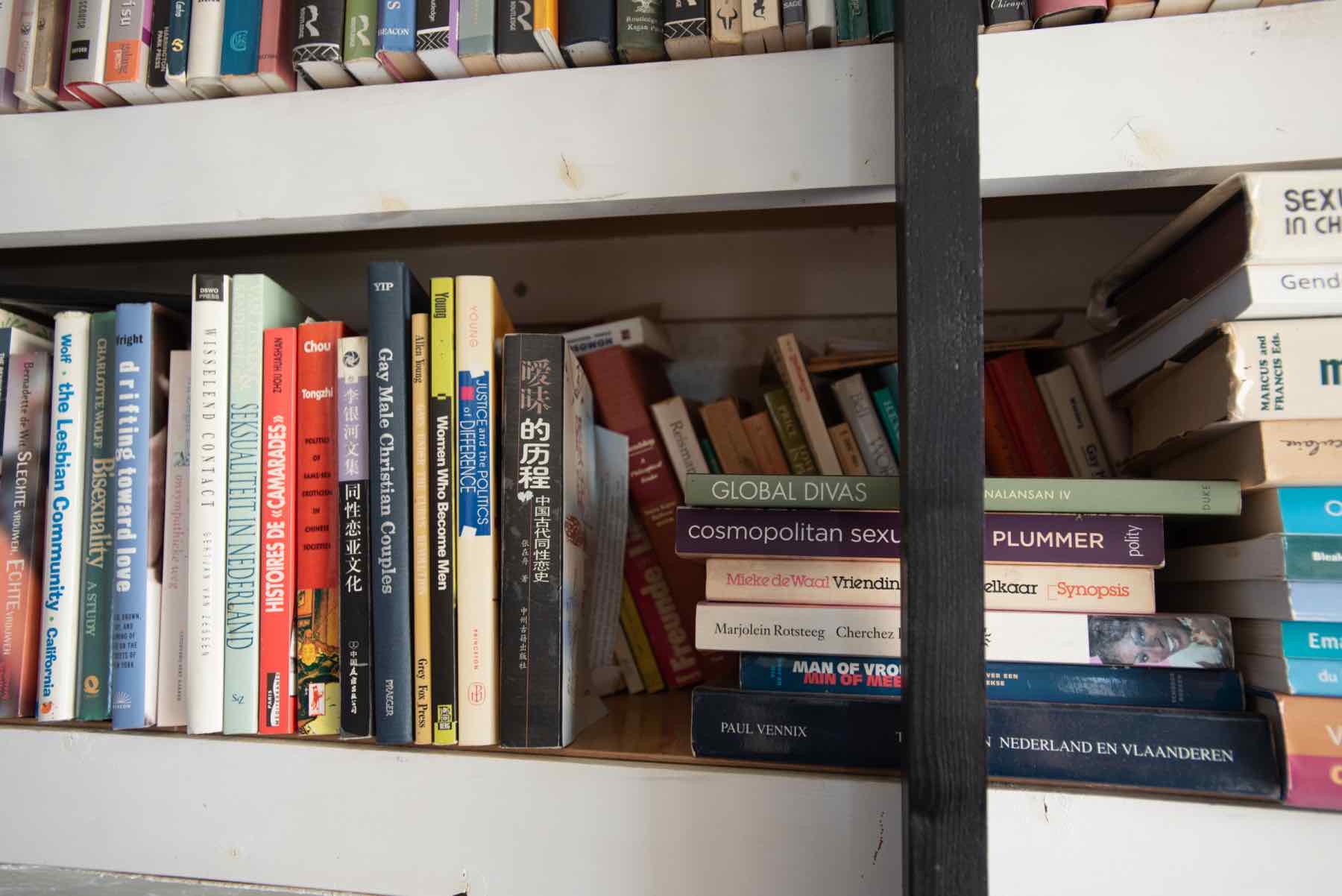
Jennifer V. Evans, Life among the Ruins. Cityscape and Sexuality in Cold War Berlin.
This study of Berlin’s sexual cityscape is one of the few books that deals with sexual geography in a broad, historical perspective. With a booming history and sociology of sexuality, little has still been published on this specific spatial topic. There are now several tomes on gay urban history but this study reaches beyond homosexuality into the mainstream although queer issues remain very central for Jennifer Evans. And while most research was on North-American, English and German cities, the latter were always written in German and so not available to an English-reading public except for Mel Gordon’s picture book Voluptuous Panic. The Erotic World of Weimar Berlin (2000). This study now offers insights in Berlin’s erotic past mainly after the war when the city lay in ruins and always got more split between its Western capitalist and Eastern communist part. This partition culminated in 1961 with the construction of the Berlin Wall. With the Cuba Crisis of 1962 this was the high point of the Cold War and Berlin became synonymous with divided city and East-West conflict. In the summer of 1963, John F. Kennedy would say “Ich bin ein Berliner” – in defense of West-Berlin and Western liberal freedoms against communist dictatorship.
The book is divided in five chapters: cellar and bunker; street; train station; bars, cafés and clubs and finally home. The first mainly discusses life in the bunkers during and after the war when they were used for various functions, as prisons, homes, warehouses. During the war they meant safety for a population that was bombed out of bed nearly every night in the final weeks of the war but also danger after surrender when about a million girls and women got raped by invading Russian troupes. They offered shelter to about 50.000 young people who had lost homes and parents in the brutal final days of the war and many other youngsters who had fled from the East. The city’s streets remained for a long time covered with debris while the houses lining them often were ruins. The smell of corpses and the lack of lights gave the city a sinister feel. Many people may have remembered the glamour of Weimar Berlin and although the cityscape changed little, the glorious days of the past had definitely gone. One sexual institution continued from Weimar to postwar Berlin: street walking. Before the war this attracted tourists, afterwards occupation soldiers. In particular healthy Americans offered special chances to Berliners living in conditions of misery: poverty and ruined houses with overpopulated apartments in a city that was devastated. Some estimates counted 250.000 prostitutes in Berlin. Train stations had stood out in the Berlin landscape before the War – transit places for workers, tourists and also for sex. They kept their erotic reputation in particular Bahnhof Zoo where (sometimes underage) boys and girls offered their services. But although communist Eastern authorities liked to attribute such reviled sexual activities to capitalism, they also happened in their part of the city around station Friedrichstrasse. In the chapter on bars the redevelopment of the recreational sector – strongly helped by all visiting foreign soldiers - is discussed. But it came with growing police attention for vice in the bar culture and the growing repression of sexual dissidence. The chapter on home discusses the reconstruction of both Berlins and the new housing blocks but also the reeducation shelters for street youth that sometimes became dens of queer desires. The solution of urban problems led to new questions how to discipline young people that had experienced Nazi tyranny, disaster in the final days of the war and postwar chaos that had left them uncontrolled. It was hard work to bring them back to a respectable, straight family life. In their pursuit of a healthy heterosexuality and work discipline, with rules and laws against sexual variation, capitalism and communism were only marginally different as Evans clearly demonstrates.
The book offers many interesting insights. Although it has a strong focus on youth and prostitution, little of the life of sex workers transpires. Because the people from the period still live, it made me very curious how they themselves look back on their postwar experiences. The book is more based on reports from police control and reeducation centers than on their personal stories that may shed a different light on the situation. The focus is often on the miseries and the controls of the time, but narratives of survivors may add other more encouraging stories. Although sex work and erotic dissidence are for obvious reasons quite central to the book, it makes one wonder how other Berliners led their more mainstream sexual lives. Jennifer Evans has written an engaging and informative book that makes one desire for more narratives on the sexual life of cities that play a central role in urban erotic imagination like Berlin. How does living in a sex capital reflect back on its denizens and what mean such cities for other more sedate places?
Gert Hekma, University of Amsterdam
